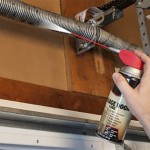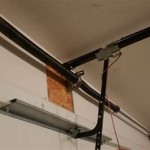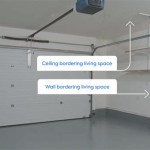Rubber Gasket for Garage Door
Garage door rubber gaskets play a critical role in maintaining the efficiency and functionality of garage doors. These gaskets, also known as weatherstripping, are responsible for sealing the gaps between the garage door and the frame, preventing air, moisture, dust, and pests from entering the garage.
Rubber gaskets for garage doors come in various shapes, sizes, and materials, but they all serve the same purpose: to create a tight seal and protect the garage from the elements. Common types of rubber gaskets include:
- Bulb-type gaskets: These gaskets have a bulbous shape that fits into the space between the door and the frame, providing a snug seal.
- Compression-type gaskets: These gaskets compress when the door is closed, creating a tight fit against the frame.
- Brush-type gaskets: These gaskets have a row of bristles that sweep against the frame, preventing debris and moisture from entering.
- Bulb-and-brush-type gaskets: These gaskets combine the features of bulb-type and brush-type gaskets, providing both a tight seal and protection against debris.
Choosing the right rubber gasket for your garage door depends on the specific needs of your application. Factors to consider include:
- Type of garage door: Sectional doors, roll-up doors, and tilt-up doors require different types of gaskets.
- Size of gaps: The size of the gaps between the door and the frame will determine the thickness and shape of the gasket required.
- Climate: Extreme temperatures and environmental conditions can affect the performance of rubber gaskets.
- Budget: Rubber gaskets range in price depending on the material, size, and complexity of the design.
Installing rubber gaskets for garage doors is typically a straightforward process. However, it is important to follow the manufacturer's instructions carefully to ensure a proper fit and seal. Here are the general steps involved:
- Clean the door and frame: Remove any dirt, debris, or old gaskets from the door and frame surfaces.
- Apply adhesive: Apply a thin layer of adhesive to the back of the gasket or to the contact surfaces of the door and frame.
- Install the gasket: Position the gasket in the designated area and press it firmly into place.
- Trim excess: If necessary, trim any excess gasket material to ensure a clean and finished look.
Regular maintenance of rubber gaskets is essential to ensure their continued effectiveness. Here are some maintenance tips:
- Inspect gaskets regularly: Check gaskets for any tears, cracks, or damage and replace them if necessary.
- Clean gaskets: Remove dirt and debris from gaskets using a damp cloth or sponge.
- Lubricate gaskets: Occasionally apply a silicone-based lubricant to gaskets to keep them柔軟 and prevent sticking.
- Replace gaskets when necessary: Rubber gaskets will eventually wear out over time and need to be replaced to maintain a tight seal.
By choosing, installing, and maintaining the right rubber gaskets for your garage door, you can effectively protect your garage from the elements, improve energy efficiency, and extend the life of your garage door system.

How To Replace Weather Stripping On A Garage Door

How To Replace Your Damaged Garage Door Bottom Seal Not As Easy You Think The Diy Truth

Garage Door Weather Seal Replacement Services A1 Service

Epdm Rubber Garage Door Bottom Kit Frost King Weatherization Products

4 Inch Black 1 T Style Heavy Duty Rubber Garage Door Seal

Common Garage Door Seal Types And How To Maintain Them A Better

Garage Door Bottom Seal Replacement Prepare For The Winter

Garage Door Bottom Rubber Seal South

How To Replace Garage Door Bottom Seal Youtube

Garage Door Bottom Seal Replacement Prepare For The Winter








